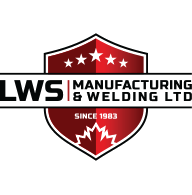Sanitary Welding Standards for Food-Grade Applications
Various sanitary welding standards for food-grade applications exist to prevent contamination between welded components and the food products that pass through them or over them. All welders that fabricate equipment, tubes, and pipelines for food processing should understand these standards and utilize the best possible tools and techniques to ensure sanitary welds. As leading providers of fabrication and welding services, the team at LWS Manufacturing & Welding knows how important every detail is when producing food-grade products. That is why we have outlined some best practices to ensure compliance with sanitary welding standards.
Learn about some food-grade welding mistakes to avoid.
Important Sanitary Practices for Welding Food-Grade Products
When welding stainless steel or other food-grade materials, welders must be mindful of the following practices to ensure compliance with sanitation standards:
Frames Should be Sealed, not Bolted
Framework—like tubular piping—should be sealed together in a manner that allows for easy disassembly for cleaning or automatic draining. When working with these products, it is important to avoid penetrating the materials with bolts, rivets, or studs as these can break the seal and result in rough surfaces. All connections should be achieved through welding wherever possible, though sealed screw threads can be used in certain situations.
All Burrs and Sharps Must be Removed
Microscopic burrs and “sharps” may be acceptable for some applications, but they must be avoided at all costs for food-grade products. While keeping a meticulous eye for details is important, burrs and sharps can still be produced during the fabrication process. That is why most skilled welders—like the team at LWS Welding & Manufacturing—utilize sanding, electropolishing, and other smoothing techniques to remove them at the end of the process. Another key process is purge welding. This is the process of flushing the oxygen out of the pipe or tubing with argon prior to welding to eliminate porosity on the inside of the tubing or pipe. Purge welding helps to ensure that the pipe can be properly washed out and cleaned after food or beverages pass through it.
Surfaces Must Never be Overstressed
When working with stainless steel, welders must avoid inflicting too much stress on the surface. Excess stress can cause the oxide layer to be stripped away, making the steel susceptible to corrosion. In addition to surface stress, welders must be sure to refrain from using techniques that can cause stress crack or microfractures, as both forms of damage can lead to contamination over time.
Dissimilar Metals Should Never be Welded Together
Though this rule applies to most applications, it is especially applicable to food-grade products. Welding dissimilar metals like stainless steel and low-carbon steel together can result in corrosion and heat stress cracking, both of which can cause contamination. Welders should always take the time to ensure that they are joining identical materials to prevent these issues from occurring.
To learn more about our food-grade products and other metal products, get in touch with the experts at LWS Manufacturing & Welding. We can be reached through our online contact form and will be happy to answer any questions you may have regarding our products and services.




